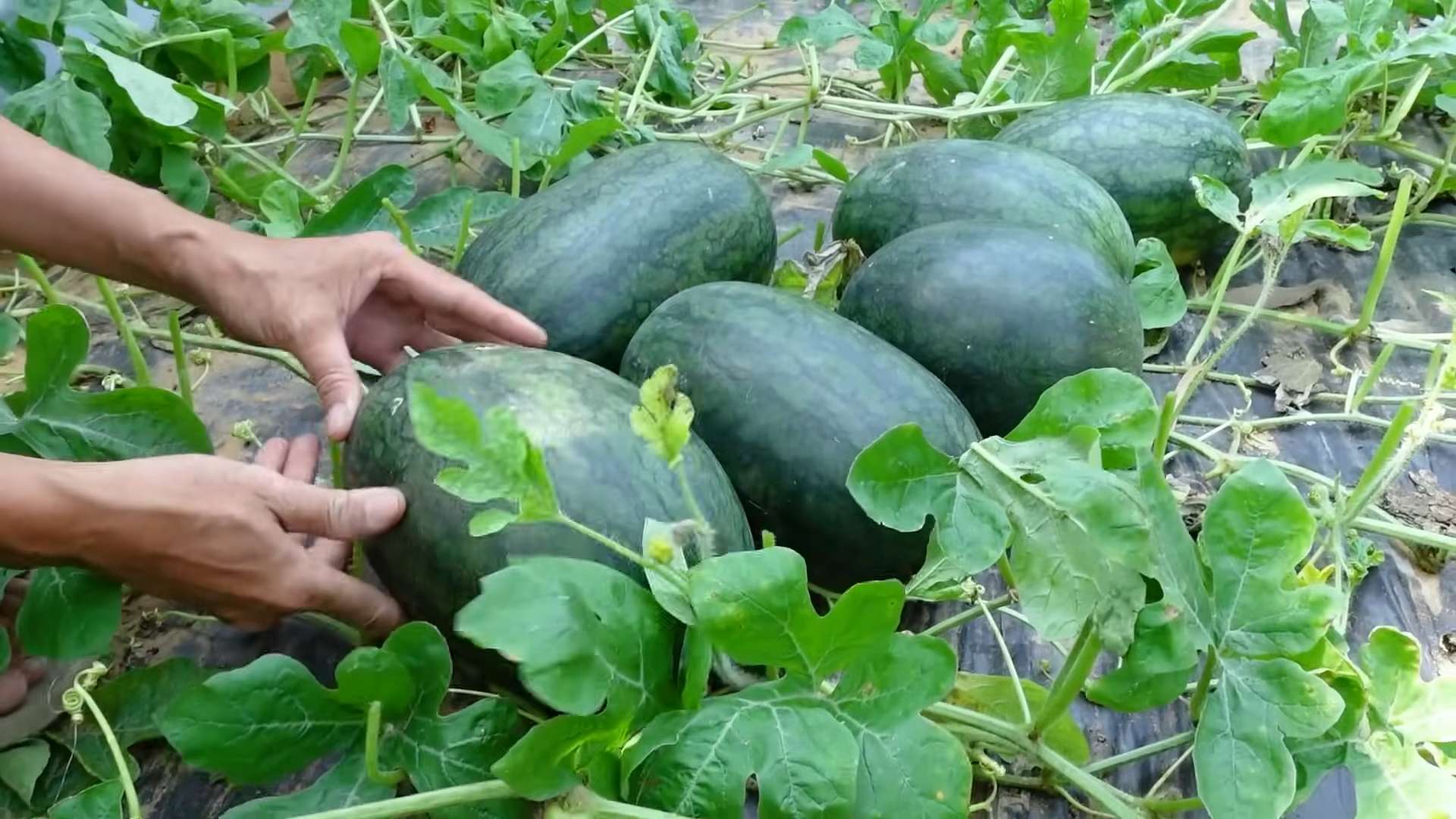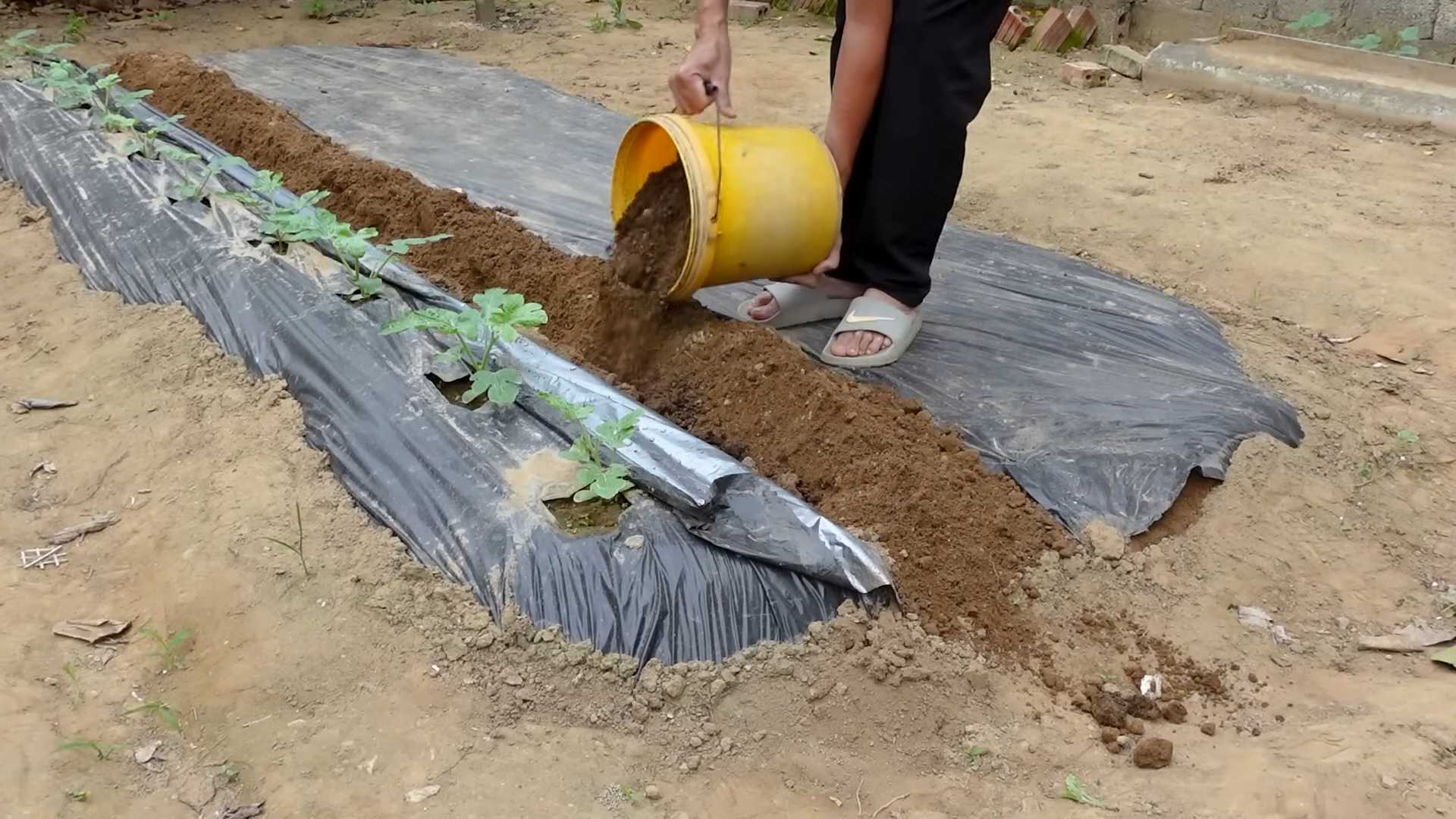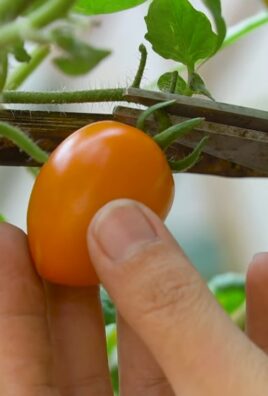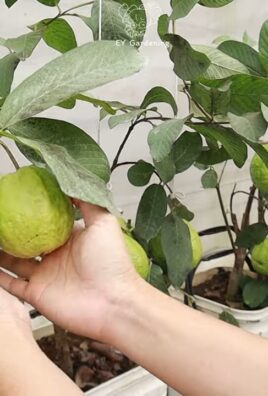Growing Watermelons at Home: A Juicy Adventure
Growing watermelons at home might seem daunting, conjuring images of sprawling vines and endless sun-drenched fields. But I’m here to tell you it’s far more achievable than you think! This article is packed with growing watermelons at home tricks and DIY solutions that will transform your backyard into a mini-melon patch, bursting with sweet, juicy rewards. Forget expensive grocery store melons – let’s unlock the secrets to cultivating your own delicious harvest.
The history of watermelon cultivation is fascinating, stretching back thousands of years to ancient Egypt. Depictions of watermelons have been found in ancient tombs, highlighting their importance in early civilizations. Today, growing watermelons at home has become a popular pastime, offering a rewarding connection to nature and the satisfaction of nurturing something from seed to succulent fruit.
Why Grow Your Own Watermelons?
There are so many reasons to embark on this juicy journey! Imagine biting into a perfectly ripe watermelon, bursting with flavor, knowing you grew it yourself. Beyond the delicious taste, homegrown watermelons are often sweeter and more flavorful than store-bought ones, free from pesticides and preservatives. Plus, it’s a fantastically fun project for the whole family, teaching valuable lessons about patience, nurturing, and the wonders of nature. This article will equip you with the knowledge and practical DIY tips to make growing watermelons at home a successful and enjoyable experience.
So, grab your gardening gloves, and let’s get started on this delicious adventure! We’ll cover everything from choosing the right seeds and preparing the soil to dealing with common pests and harvesting your prize-winning melons. Get ready to experience the ultimate satisfaction of growing your own juicy, sweet watermelons!

Growing Juicy Watermelons in Your Backyard: A Step-by-Step Guide
I’ve always loved the sweet taste of a perfectly ripe watermelon, and nothing beats the satisfaction of growing your own. It might seem daunting, but with a little patience and these instructions, you’ll be enjoying homegrown watermelons in no time!
Phase 1: Planning and Preparation
- Choose the right variety: Research watermelon varieties suitable for your climate. Consider factors like growing season length and disease resistance. Smaller varieties are often easier for home gardeners.
- Select a sunny spot: Watermelons need at least six to eight hours of direct sunlight daily. Choose a location in your garden that receives ample sun.
- Prepare the soil: Watermelons thrive in well-drained, fertile soil. Amend heavy clay soil with compost or other organic matter to improve drainage and aeration. Conduct a soil test to determine nutrient levels and adjust accordingly.
- Gather your supplies: You’ll need watermelon seeds (or seedlings), gardening gloves, a shovel or trowel, a watering can, fertilizer (balanced, slow-release is ideal), and possibly some garden netting or stakes for support (depending on the variety).
Phase 2: Planting Your Watermelon Seeds
- Start seeds indoors (optional): For an earlier harvest, start seeds indoors 3-4 weeks before the last expected frost. Use seed starting mix and small pots. Keep the soil moist but not soggy.
- Direct sowing: Alternatively, you can sow seeds directly into the garden after the last frost. Plant seeds 1 inch deep and 2-3 feet apart, in hills or rows. Plant several seeds per hill to increase your chances of successful germination.
- Thinning: Once seedlings emerge, thin them to one or two strong plants per hill. This gives the remaining plants enough space to grow.
- Watering: Water deeply and regularly, especially during dry spells. Consistent moisture is crucial for healthy growth. Avoid overhead watering to prevent fungal diseases.
Phase 3: Nurturing Your Watermelon Plants
- Fertilizing: Apply a balanced fertilizer according to package instructions. Side-dress the plants (apply fertilizer along the sides of the plants) about a month after planting. Avoid over-fertilizing, as this can lead to excessive foliage and fewer fruits.
- Weed control: Regularly remove weeds to prevent competition for nutrients and water. Mulching around the plants can help suppress weeds and retain moisture.
- Pest and disease management: Monitor your plants regularly for signs of pests or diseases. Common watermelon pests include aphids, squash bugs, and cucumber beetles. Use appropriate organic pest control methods if necessary. Good air circulation can help prevent fungal diseases.
- Support (if needed): Some watermelon varieties may require support, especially those with larger fruits. Use netting or stakes to keep the vines off the ground and prevent rot.
- Pollination: Watermelons are typically pollinated by bees. If you notice a lack of bees in your area, you might need to hand-pollinate the flowers. This involves carefully transferring pollen from the male flower (smaller, with a long stem) to the female flower (larger, with a small fruit behind the blossom).
Phase 4: Harvesting Your Watermelons
- Monitoring ripeness: Watermelons are ripe when the rind is hard and dull, not shiny. The tendril closest to the fruit will turn brown and dry. A ripe watermelon will also have a deep, resonant sound when thumped.
- Harvesting: Carefully cut the watermelon from the vine using a sharp knife. Avoid damaging the fruit.
- Curing: Allow the harvested watermelons to cure for a few days in a cool, dry place. This improves their flavor and shelf life.
- Storage: Store ripe watermelons in a cool, dark place. They will keep for several weeks under ideal conditions.
Troubleshooting Common Watermelon Growing Problems
- Yellowing leaves: This could indicate nutrient deficiencies, overwatering, or pests. Check your soil, adjust watering, and inspect for pests.
- Wilting plants: This is often a sign of underwatering or pest infestation. Water deeply and check for pests.
- Small or misshapen fruit: This can be caused by poor pollination, nutrient deficiencies, or overcrowding. Ensure adequate pollination, fertilize properly, and thin plants if necessary.
- Bitter taste: This can be due to stress during growth, such as inconsistent watering or extreme temperatures. Try to provide consistent care and a suitable environment.
Remember, patience is key! Growing watermelons takes time and effort, but the reward of enjoying your own homegrown fruit is well worth it. Happy gardening!

Conclusion
Growing your own watermelons at home is a surprisingly rewarding experience, offering a taste of summer sweetness far superior to anything you’ll find in the store. This DIY trick, focusing on maximizing sunlight and soil drainage, unlocks the secret to juicy, flavorful watermelons bursting with that quintessential summer taste. It’s a project that connects you to the land, teaches patience, and ultimately delivers a delicious payoff. The satisfaction of biting into a watermelon you nurtured from seed to ripe fruit is unparalleled. Beyond the incredible taste, growing your own watermelons allows for customization. You can experiment with different varieties, selecting those with unique colors, sizes, or sweetness levels to perfectly suit your palate. This method isn’t just about growing watermelons; it’s about cultivating a deeper appreciation for the natural world and the simple joy of homegrown produce. Don’t be intimidated by the seemingly complex process; with a little planning and care, even novice gardeners can achieve impressive results. So, gather your seeds, prepare your soil, and embark on this delightful journey. You’ll be amazed at the juicy, sun-ripened rewards! Share your watermelon growing journey with us – we’d love to see your photos and hear about your experiences! Tag us on social media and let’s celebrate the sweet success of homegrown watermelons together. Remember, the key is consistent care and attention, and the payoff is a watermelon experience unlike any other. This DIY method for growing watermelons at home is a must-try for anyone seeking a fulfilling gardening project and the ultimate summer treat.
Frequently Asked Questions
What type of soil is best for growing watermelons?
Watermelons thrive in well-drained, sandy loam soil. Avoid heavy clay soils, which retain too much water and can lead to root rot. Amend heavy clay soils with organic matter like compost to improve drainage and aeration. The ideal soil pH for watermelons is slightly acidic to neutral, between 6.0 and 6.8. A soil test can help determine your soil’s pH and nutrient levels, allowing you to make necessary adjustments before planting. Proper soil preparation is crucial for successful watermelon cultivation.
How much sunlight do watermelons need?
Watermelons are sun-worshippers! They need at least six to eight hours of direct sunlight per day to produce abundant fruit. Choose a location in your garden that receives ample sunlight throughout the day. Insufficient sunlight can result in smaller, less flavorful watermelons, or even a complete failure to produce fruit. Consider the sun’s path throughout the day when selecting your planting site to ensure maximum sun exposure.
When is the best time to plant watermelon seeds?
The best time to plant watermelon seeds depends on your climate. Watermelons require warm soil temperatures, ideally above 70°F (21°C). In most regions, this means planting after the last expected frost. You can start seeds indoors 2-3 weeks before the last frost to give them a head start, but be sure to harden them off before transplanting outdoors. Check your local frost dates to determine the optimal planting time for your area. Planting too early can result in damage or death of the seedlings.
How often should I water my watermelons?
Consistent watering is essential, especially during the fruiting stage. Water deeply and regularly, aiming for about 1 inch of water per week. However, avoid overwatering, which can lead to root rot. The best way to determine watering needs is to check the soil moisture. If the top inch or two of soil feels dry, it’s time to water. Mulching around the plants can help retain soil moisture and reduce the frequency of watering.
What are some common problems when growing watermelons?
Some common problems include pests like aphids, squash bugs, and cucumber beetles. Regularly inspect your plants for signs of infestation and take appropriate action, such as using insecticidal soap or introducing beneficial insects. Diseases like powdery mildew and fusarium wilt can also affect watermelons. Proper spacing, good air circulation, and disease-resistant varieties can help prevent these issues. Maintaining a healthy growing environment is key to preventing problems.
Can I grow watermelons in containers?
Yes, you can grow watermelons in large containers, but choose a variety specifically bred for containers. These varieties tend to be smaller and more compact. Ensure the container is at least 18 inches in diameter and depth to accommodate the watermelon’s root system. Use a well-draining potting mix and provide ample sunlight. Container-grown watermelons may require more frequent watering than those grown in the ground.
What are some variations on this growing method?
You can experiment with different watermelon varieties, from classic red-fleshed types to yellow or orange varieties. Consider using trellises to support the vines, especially in areas with limited space. This can also improve air circulation and reduce the risk of diseases. You can also try companion planting, such as planting basil or marigolds near your watermelons to deter pests. The possibilities are endless! Experiment and find what works best for you and your garden.




Leave a Comment